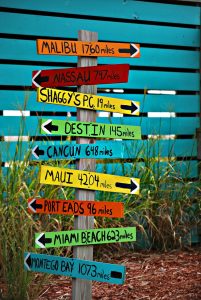I note that this is my last post for the year, so I thought I’d summarize a few things. For one, so you can look for anything you’re interested in. Also, so I can recall what I’ve been up to! So here’s a brief summary of the past year.
Quinnovation
So I’ve been Quinnovation for the past couple of decades, give or take a year. Which has been my vehicle for consulting. I’ve continued to service clients, on a limited basis (owing to some other commitments, see below); I’ve had several ongoing engagements, some that were new this year, at least one which has continued on from previous years.
I don’t mention the organizations and what I’m doing for them, specifically, because that would violate confidentiality (something I care deeply about; my academic background continues to influence my thoughts on integrity). Yet, the topics that emerge can end up fueling blog posts, webinars, conference presentations, and more. While the solutions I provide are specific to their situations, the reflections and revelations are shareable (suitably anonymized).
For the record, I also had a variety of interviews for podcasts and webinars. They’re scattered hither and yon, and also talking about a variety of topics. I can’t even remember them all (mea culpa), but they all seemed to be of interest to the host and audience. More such coming in the new year.
Upside Learning
In the year before this one, I joined up with Upside Learning to serve as their Chief Learning Strategist. This has been a great opportunity to practice what I preach. I’m working with them internally to improve the learning science in their approach, and externally to evangelize and work with clients ready to take it to the next level. Their CEO, Amit Garg, is great to work with, as it’s clear he really cares about learning.
That evangelizing also requires me to be part of the marketing (hi, Isha!). The upside (heh) is getting to talk about important issues, while the downside is occasionally having to use terms like ‘microlearning‘ (though I reserve the right to be subversive about them). I also am appearing at some events on their behalf. If you’re curious, there are a fair number of articles, ebooks, white papers, videos, and more to be found on their site that I’ve had a hand in. More to come. Check it out!
Learning Development Accelerator
Matt Richter and Will Thalheimer started the Accelerator after their Covid-catalyzed conference was successful. It’s a membership society about the evidence-base for Learning & Development. I came in when Will took a job and couldn’t meet the demands. While Matt keeps the place running (even more so with the help of Esther), I get to have a hand in the topics we address. It’s small, so far, but the quality is very high (that is, the membership and the speakers for events ;).
The first year I had a series I called You Oughta Know, introducing people with models I thought members should know. This past year it’s been debates on topics (to unpack the underlying thinking). All of the past content is available to members, a growing library. I’ve also been part of the blog, with posts on informal learning (should I choose a new topic for this year?). You can access some of the events even if you’re not a member (typically for a fee), but the blog’s behind the firewall. There are some articles outside the paywall, however. This coming year, we’ll likely keep the debates, and continue to have events. We’ve (read: Matt) also resurrected the podcast, which is free to air. There’ll be more announcements, too.
I’m planning two new series for the coming year. One is YOK: Practitioners. This time it’s people you oughta know because of what they’re doing (people I admire, though I won’t be able to get them all)! Another that I’m excited about is Think Like A…! This is a series about the related fields we draw upon. As a field, we’re (rightfully) quite acquisitive: we took agile from software engineering, design thinking from UX, etc. We really should be understanding what it means to think like a practitioner in certain fields, to see what we can and should adopt. I’ve already got some people for these endeavors lined up (bwaahaha!). Consider joining if this sounds like something you’d be interested in.
Elevator 9
A last formal role (I have some informal ones too) is as the science advisor to Elevator 9. This is a company founded on the idea of spacing learning out (a worthwhile endeavor). The founder took my learning science class and then asked me to assist. They’re still getting going, though already with clients, but have made some new moves to kick in next year.
In addition to advising them on design behind the scenes, I’ve scripted, and the CEO David Grad has recorded, a series of short videos about learning. While I’ve suggested that they host them on the Elevator 9 site, that hasn’t happened yet (running on the smell of the proverbial oily rag). I think the best way to find them is to search LinkedIn for “Liftology” and then look at all the ‘post’ results. Hopefully, we’ll make that easier early next year (hint hint, nudge nudge).
And that’s more than enough, I reckon. That’s some of what I’ve been up to in the past year. What’s coming? Well, I’ve given away some of it. There’ll be more from all of the above, of course. Stay tuned! I hope you’ve had a great year, and that the next is your best yet. Happy Holidays!
